ADATA XPG SX930 (120GB, 240GB & 480GB) SSD Review: JMicron JMF670H Debuts
by Kristian Vättö on July 16, 2015 10:00 AM ESTSequential Read Performance
For full details of how we conduct our Iometer tests, please refer to this article.
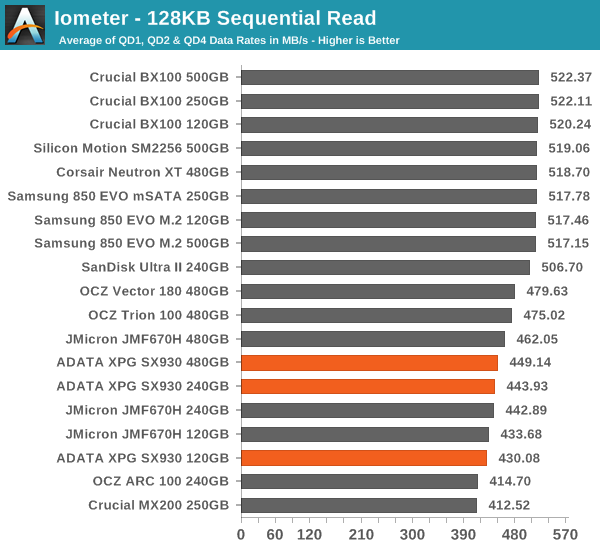
Sequential read performance is surprisingly marked down. While we are only talking about a 10-20% difference, given the longevity of the push towards sequential data rates, I wouldn't expect any modern controller to have trouble with sequential read performance anymore.
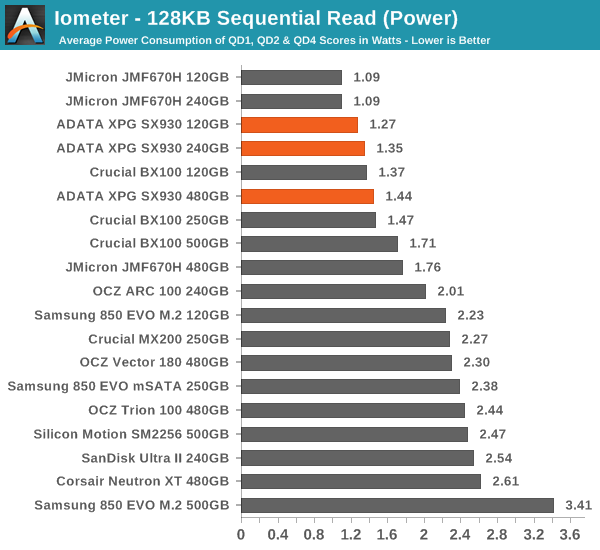
Power is also low, though, resulting in efficient, yet a bit low performance.
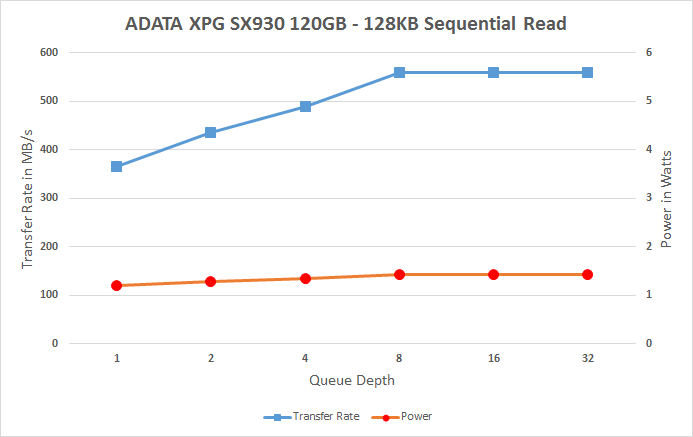 |
|||||||||
The reason for the poor sequential read performance lies in very poor performance scaling. Typically all modern drives reach ~550MB/s at QD2, but the JMF670H requires QD8 to reach its maximum performance. This has a knock on effect for any non-prosumer or gaming scenario which is where the SX930 series is aimed at.
Sequential Write Performance
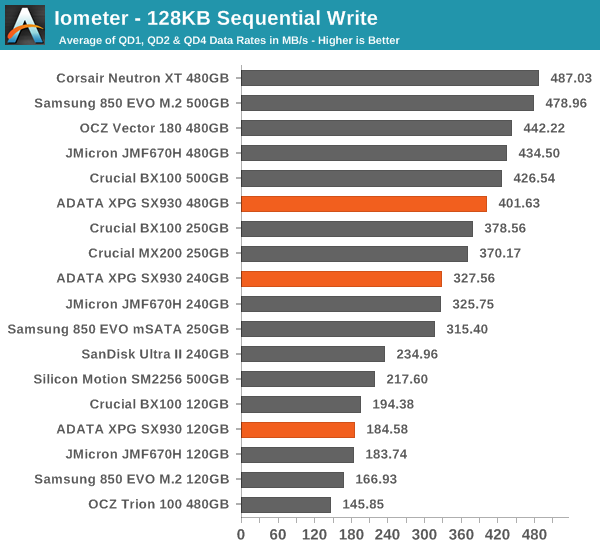
Sequential write performance is a bit better and here the SX930 is a quite average drive, although the 480GB model should again be faster since it's slightly behind its competitors.
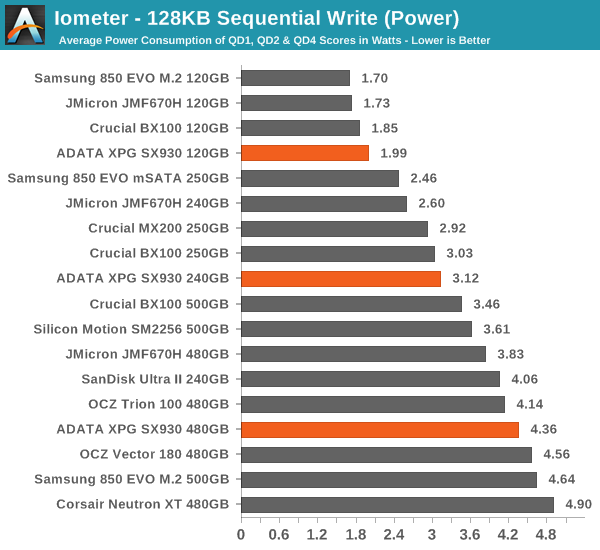
Scaling with queue depth is minimal, which is normal for low capacity drives but at 240GB and 480GB there should be enough NAND bandwidth available for higher throughput which we don't see here, perhaps indicating some of the limitations of the controller.
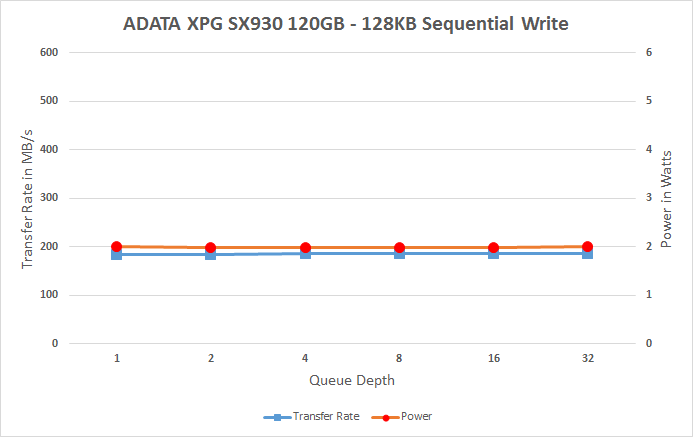 |
|||||||||










67 Comments
View All Comments
sonny73n - Thursday, July 16, 2015 - link
LOL @EVO 3-bit NAND...I just threw out my 1 year old 840EVO 250GB which was the worst SSD I've ever had. MX200 500GB is in and I wish I could've got this one from the begining instead of the EVO junk.
Stochastic - Thursday, July 16, 2015 - link
Just curious, what problems did you encounter?fokka - Thursday, July 16, 2015 - link
i guess the same as so many others, which still has no real fix: http://www.anandtech.com/show/8550/samsung-acknowl...Impulses - Thursday, July 16, 2015 - link
That's not about the 850.Adding-Color - Thursday, July 16, 2015 - link
What not about the 850? OP was talking about the 840!futrtrubl - Thursday, July 16, 2015 - link
Actually the OP was talking about something to challenge the EVO, the latest of which is the 850.Samus - Saturday, July 18, 2015 - link
What proof does anybody have the 850EVO is going to be any difference than the 840EVO with performance degradation. They use the same technology and only the 850PRO get's the binned, lower node 3D VNAND.voicequal - Monday, July 20, 2015 - link
The 840EVO was on ~19nm NAND. The 850EVO uses 40nm V-NAND which should provide much greater cell integrity needed for TLC operation.sonny73n - Friday, July 17, 2015 - link
What about the 850? After my experience with that "EVO", Samsung 3-bit TLC NAND in particular, I had lost interest and trust in Samsung. The 830 Pro 128GB I had years ago was excellent though but it took a chunk out of my pocket. So I guess when it comes to value for the money, I should always look somewhere else.bug77 - Friday, July 17, 2015 - link
Then you don't know that the 850 EVO has *nothing* to do with 840 EVO. Not surprising, otherwise you wouldn't have bought that PoS. The planar TLC is bottom of the barrel, with slow access and probably under 1000 P/E cycles. The 850 EVO uses 3D NAND which alleviates those issues.So you see, it really wasn't an 840 EVO problem, it was a planar TLC NAND problem. Many cheap drives still use that.